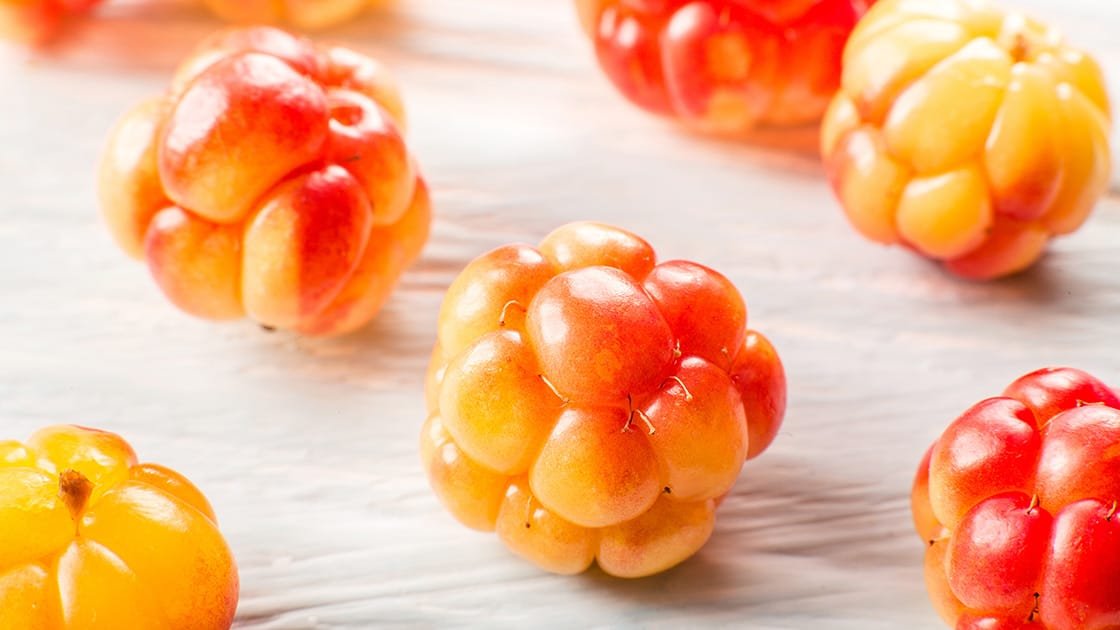Cloudberry Fruit Facts,FAQs, Behaviour, Habitat, Conservation and more

Cloudberry Fruit Facts | Description | Distribution and Habitat | Botany and evolution | Cultivation | Uses | Cultural | Interesting facts | frequently asked questions about Cloudberry Fruit
Cloudberry, also known as ‘Rubus chamaemorus’, is a delicious and nutritious fruit that is highly sought after in many parts of the world. With its unique flavor and health benefits, it has become a popular ingredient in many recipes, including jams, jellies, and desserts. This juicy, bright orange berry grows in the cool and moist regions of the Arctic and is a favorite of many for its distinct tart and sweet taste.
Taxonomy of Cloudberry Fruit
| Kingdom | Plantae |
|---|---|
| Order | Rosales |
| Family | Rosaceae |
| Genus | Rubus |
| Subgenus | Rubus |
| Species | Rubus chamaemorus |
| Subspecies | Rubus chamaemorus subsp. chamaemorus |
| Variety | Rubus chamaemorus var. chamaemorus |
| Trinomial Name | Rubus chamaemorus subsp. chamaemorus |
Morphology of Cloudberry Fruit
| Feature | Description |
|---|---|
| Plant Type | Perennial herbaceous plant |
| Stem | Trailing stem, up to 25 cm long, with sharp spines |
| Leaves | Alternate, simple, lobed, and toothed, up to 20 cm in diameter |
| Flowers | Solitary, white to pink, with five petals, 1.5-3 cm in diameter |
| Fruit | Aggregate fruit, round to oblong in shape, 1-2 cm in diameter |
| Skin | Velvety texture, bright orange to amber color |
| Flesh | Soft and juicy, with numerous small seeds |
| Taste | Tart and sweet, often compared to a mix of raspberry and peach |
| Ripening Season | Late summer to early autumn |
| Habitat | Arctic and subarctic regions of Europe, North America, and Asia |
| Growing Conditions | Cool and moist environments, acidic soils, and low light levels |

Description of Cloudberry Fruit
Cloudberry is a unique and delicious fruit that is native to the cool and moist regions of the Arctic. This fruit has been used for centuries in traditional cuisine and medicine due to its high nutrient content and health benefits. Cloudberry is rich in antioxidants, vitamins, and minerals, which make it a popular ingredient in many recipes and health supplements.
Distribution and habitat of Cloudberry Fruit
Cloudberry is widely distributed throughout the Arctic regions of Europe, North America, and Asia. It thrives in cool and moist environments, such as bogs, wetlands, and tundra. In these regions, it grows abundantly in the wild, but it can also be cultivated in some areas. Cloudberry is an important food source for many Arctic wildlife species, including birds, bears, and foxes. It is also an important part of traditional diets and cultures in many Arctic communities. However, due to climate change and habitat loss, the availability of Cloudberry is declining in some areas, making it a rare and valuable fruit.
Botany and evolution of Cloudberry Fruit
Cloudberry is a member of the Rosaceae family and is closely related to other well-known fruits such as strawberries, raspberries, and blackberries. It is a perennial herb that grows up to 25 cm tall and has large, lobed leaves. The flowers of the Cloudberry plant are white and bell-shaped, and the fruit is a bright orange drupe that is round and slightly flattened. Cloudberry has been around for millions of years and has evolved to thrive in the cold and moist environments of the Arctic regions.
Cultivation of Cloudberry Fruit
Cloudberry is a difficult fruit to cultivate due to its specific environmental requirements. It requires cool temperatures, moist soils, and acidic conditions to grow successfully. Cloudberry is mainly grown in the wild and is harvested by hand. However, some efforts have been made to cultivate Cloudberry in controlled environments such as greenhouses and polytunnels.
Uses of Cloudberry Fruit
Cloudberry has been used for centuries in traditional cuisine and medicine. It is rich in antioxidants, vitamins, and minerals and is known for its health benefits. Cloudberry is used in a variety of food products such as jams, jellies, syrups, and liqueurs. It is also used in the cosmetic industry for its skin-nourishing properties. Additionally, Cloudberry has medicinal properties and is used to treat various ailments such as colds, flu, and digestive issues.
Cultural and Historical Significance of Cloudberry Fruit
Cloudberry is an important fruit in many Arctic cultures and has been used for centuries in traditional cuisine and medicine. In Nordic countries, it is a symbol of summer and is often used in traditional celebrations and festivals. In Sami culture, Cloudberry is considered a sacred fruit and is believed to have healing powers. It has also been used as a natural dye for clothing and textiles.
Explanatory Notes for Cloudberry Fruit
Cloudberry is a unique and delicious fruit that is native to the Arctic regions of Europe, North America, and Asia. It has a distinct tart and sweet taste and is rich in nutrients and health benefits. Cloudberry is difficult to cultivate, and therefore, it is mainly harvested in the wild. It has been used for centuries in traditional cuisine and medicine and has cultural and historical significance in many Arctic communities. Despite its challenges, Cloudberry continues to be a sought-after fruit for its unique flavor and health benefits.
Interesting facts about Cloudberry Fruit
- Cloudberry is also known as ‘Bakeapple’ in Canada and ‘Lakka’ in Finland.
- Cloudberry has been used in traditional medicine for centuries and is known for its anti-inflammatory and anti-viral properties.
- The fruit is a rich source of vitamin C and has more of it per gram than oranges.
- Cloudberry is considered a rare and exotic fruit due to its limited availability and cultivation challenges.
- The leaves of the Cloudberry plant are edible and have been used in traditional medicine and cuisine.
- Cloudberry has a long shelf life and can be stored for up to a year in a cool, dry place.
- The fruit is often used in Scandinavian cuisine and is a popular ingredient in desserts such as cakes, pastries, and ice cream.
- In some cultures, Cloudberry is believed to have magical powers and is used in rituals and ceremonies.
- The fruit is an important food source for many Arctic wildlife species, including birds, bears, and foxes.
- The fruit is high in pectin, making it a popular ingredient in jams and jellies.
General queries or frequently asked questions about Cloudberry Fruit
Q: What does Cloudberry taste like?
A: Cloudberry has a unique tart and sweet flavor that is often described as a mix between a raspberry and a peach.
Q: Where can I find Cloudberry?
A: Cloudberry is native to the Arctic regions of Europe, North America, and Asia and is mainly found growing in the wild.
Q: Can Cloudberry be cultivated?
A: Cloudberry is difficult to cultivate due to its specific environmental requirements, but some efforts have been made to grow it in controlled environments such as greenhouses and polytunnels.
Q: Is Cloudberry healthy?
A: Yes, Cloudberry is high in antioxidants, vitamins, and minerals, making it a nutritious fruit with various health benefits.
Q: How is Cloudberry used in cuisine?
A: Cloudberry is used in a variety of food products such as jams, jellies, syrups, liqueurs, cakes, and pastries.
Conclusion
Cloudberry is a unique and sought-after fruit that is native to the Arctic regions of Europe, North America, and Asia. It has a distinct tart and sweet taste and is rich in nutrients and health benefits. Although it is difficult to cultivate, Cloudberry continues to be an important part of traditional cuisine and medicine in many Arctic cultures. Its rarity and cultural significance add to its allure, making it a prized fruit for those who have the chance to taste it.












